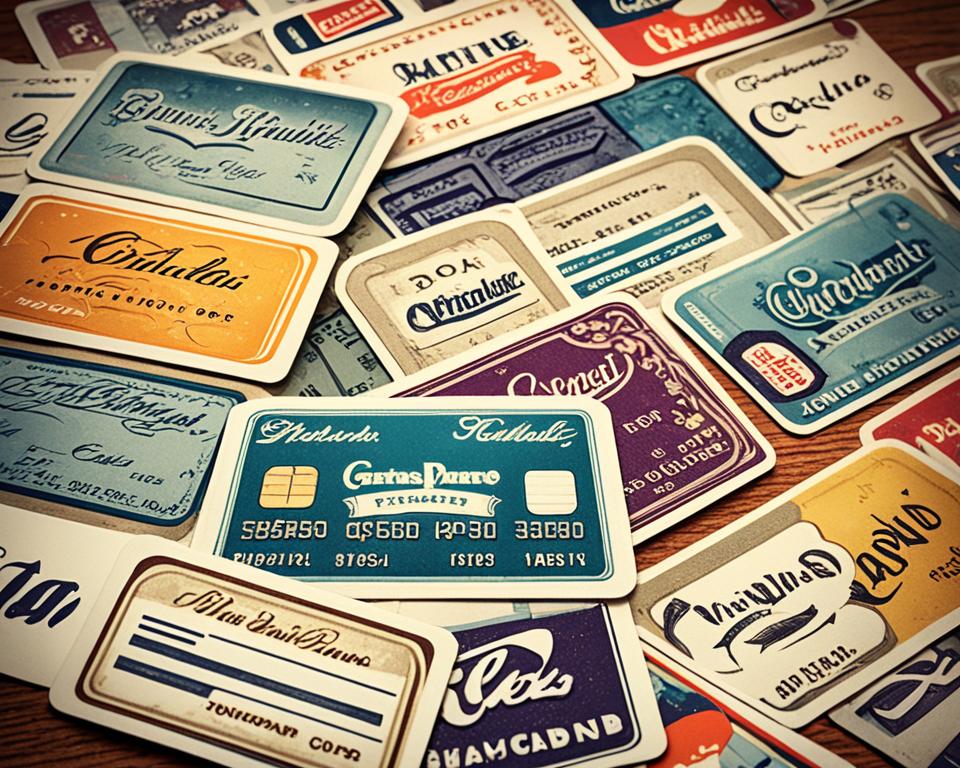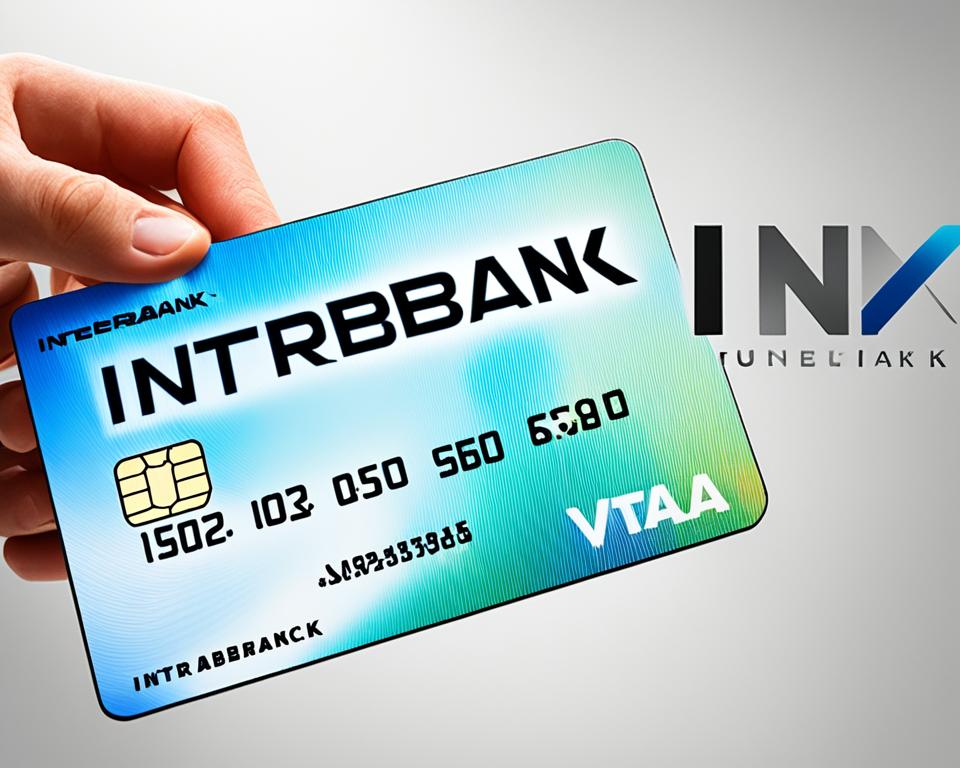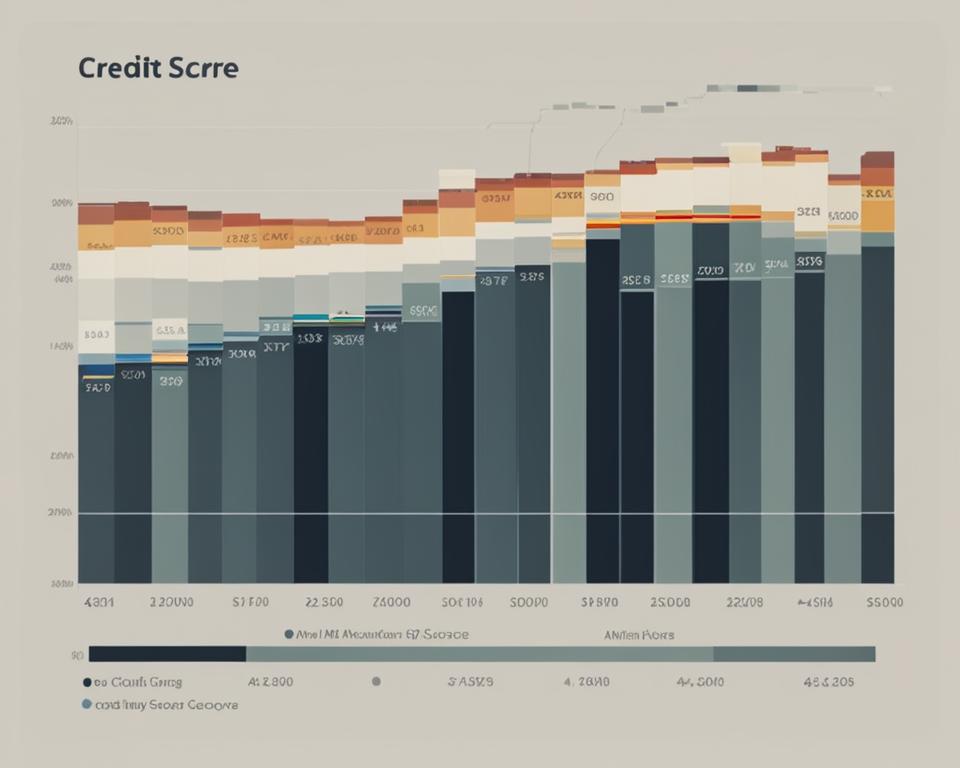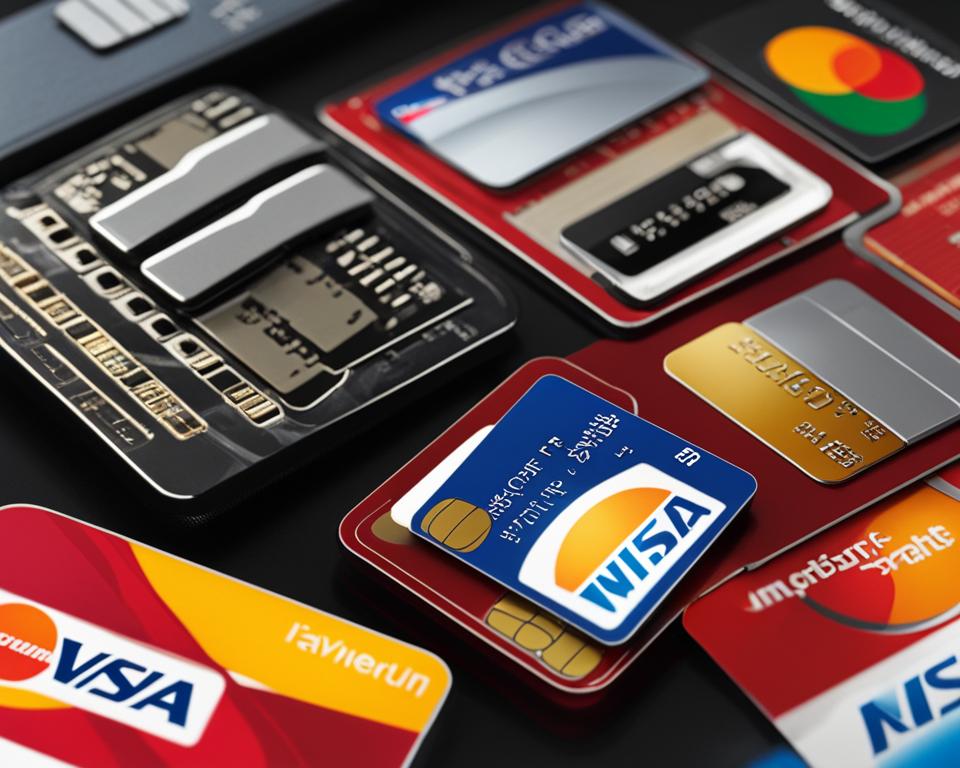Credit cards have a rich and fascinating history that spans thousands of years. From humble clay tablets to the sleek, modern cards we use today, the evolution of credit cards showcases humanity’s constant quest for convenient and efficient payment methods. In this article, we will take a journey through time to explore the development of credit cards and the significant milestones that have shaped the financial landscape.
Key Takeaways:
- Credit cards have evolved from ancient clay tablets to the plastic and metal cards we use today.
- The concept of credit can be traced back to ancient Mesopotamia, where clay tablets were used as credit cards.
- In the 1930s, store cards known as charge plates gained popularity.
- American Express introduced its own charge card in 1958, followed by Bank of America’s BankAmericard in 1959.
- Interbank cards and international acceptance paved the way for global payment systems.
Ancient Forms of Credit
The concept of credit can be traced back thousands of years to ancient Mesopotamia, where clay tablets were used as credit cards to record transactions between merchants. These early forms of credit laid the foundation for future credit systems.
Ancient credit cards, made of clay, served as a means of extending credit to individuals who needed to make purchases but didn’t have immediate access to funds. These clay tablets were inscribed with the buyer’s and seller’s information, including the amount owed and the terms of repayment. This innovative approach to credit allowed merchants to expand their businesses and fostered economic growth in ancient societies.
To get a better understanding of ancient credit cards, below is a visual representation:
| Ancient Credit Cards | Description |
|---|---|
| Ancient Mesopotamian clay tablets used as credit cards |
These clay credit cards were not only used in Mesopotamia but also in other ancient civilizations, such as Egypt and China. The formations of these early credit systems had a profound impact on commerce and trade, as they enabled individuals to transact without the need for immediate cash. The origins of credit cards can be directly linked to these ancient practices.
Early Store Cards
In the 1930s, store cards known as charge plates gained popularity as a convenient way for customers to make purchases on credit. One notable example of an early store card is the Diners Club card, which was invented in 1950 by Frank McNamara. This revolutionary card allowed patrons to charge their meals and pay the bill directly to Diners Club, marking the birth of the modern charge card.

With the Diners Club card, customers no longer had to carry cash or worry about immediate payment. Instead, they could enjoy the convenience of making purchases and settling the bill at a later date. This innovative concept laid the foundation for the development of store credit cards and revolutionized the way people transacted.
Introduction of Bank Cards
American Express introduced its own charge card in 1958, followed by Bank of America’s BankAmericard in 1959. These bank cards revolutionized the way people made purchases by allowing them to buy now and pay later, laying the foundation for modern credit cards. They provided customers with a convenient way to access credit and settle their balances monthly, offering flexibility and financial freedom.
Bank credit cards like American Express and BankAmericard quickly gained popularity for their ease of use and widespread acceptance. With the introduction of these bank cards, consumers no longer needed to carry cash or rely solely on store credit cards to make purchases. Instead, they could rely on the convenience and flexibility of bank credit cards, using them at a wide range of merchants and businesses.
Bank credit cards paved the way for the development of a robust credit card industry, fueling economic growth and changing the way people conducted financial transactions. The success of American Express and BankAmericard laid the groundwork for other banks and financial institutions to introduce their own credit cards, creating a competitive market that continues to thrive today.
The Rise of American Express
“American Express introduced its charge card in 1958, providing consumers with a new way to access credit and make purchases. With its iconic green and gold design, the American Express card quickly became a symbol of prestige and financial reliability.”
The Impact of BankAmericard
“Bank of America’s BankAmericard, later known as Visa, was introduced in 1959 and revolutionized the credit card industry. Its wide acceptance and widespread use propelled the growth of the credit card market, making it a household name and a key player in the financial world.”
The Road to Modern Credit Cards
With the introduction of bank credit cards like American Express and BankAmericard, the stage was set for further innovations in the credit card industry. These cards laid the foundation for the development of more advanced technologies, such as magnetic stripes and chip technology, that improved card security and expanded the types of transactions that could be made with credit cards.
Today, bank credit cards remain a popular choice among consumers, offering a convenient and flexible way to make purchases and manage finances. Whether it’s earning rewards, enjoying exclusive perks, or building credit history, bank credit cards continue to play a significant role in the financial landscape.
Next, we’ll explore the emergence of interbank cards and the expanding acceptance of credit cards on an international scale.
Interbank Cards
In response to the success of BankAmericard, a group of California banks came together and formed the Interbank Card Association (ICA). Their goal was to introduce a new type of credit card that would rival BankAmericard and expand the reach of their banking network. This collaboration led to the birth of the Interbank card, which later became known as Master Charge and eventually evolved into MasterCard.

The Interbank card provided consumers with a convenient and universally accepted payment option, allowing them to make purchases at various establishments across the country. It quickly gained popularity and became a worthy competitor to BankAmericard.
| Year | Milestone |
|---|---|
| 1966 | The Interbank card is introduced by the Interbank Card Association (ICA) |
| 1969 | The Interbank card is rebranded as Master Charge |
| 1979 | Master Charge changes its name to MasterCard |
This groundbreaking collaboration between multiple banks paved the way for the interconnected world of credit cards we know today. The introduction of the Interbank card demonstrated the power of cooperation and innovation in revolutionizing the financial industry.
International Acceptance
BankAmericard revolutionized the credit card industry by becoming the first internationally accepted credit card. In 1953, businesses in the United Kingdom, Cuba, Canada, and Mexico began accepting BankAmericard, paving the way for a global payment system. This breakthrough in international credit cards allowed travelers and businesses to make convenient and secure transactions across borders.
The success of BankAmericard and its global acceptance led to the formation of the International Bankcard Company (IBANCO) in 1970. IBANCO aimed to expand the reach of credit card payments on a global scale and foster collaboration among credit card issuers worldwide. This marked a significant milestone in the evolution of global payment systems, making it easier for people to make purchases and conduct business internationally.
Today, international credit cards have become indispensable for individuals and businesses engaged in global commerce. With the ability to make payments in various currencies and access credit facilities around the world, these cards have transformed the way we conduct international transactions.
Benefits of International Credit Cards
- Convenience: International credit cards allow individuals to make secure payments and withdrawals in foreign countries without the need for currency exchange.
- Rewards and Perks: Many international credit cards offer rewards and perks such as cashback, travel miles, and exclusive discounts, making them an attractive choice for frequent travelers.
- Global Acceptance: International credit cards are widely accepted by businesses and merchants across different countries, providing a seamless payment experience.
- Enhanced Security: International credit cards come with advanced security features such as chip technology and encryption, ensuring the safety of transactions abroad.
A Comparison of International Credit Cards
| Credit Card | Annual Fee | Foreign Transaction Fee | Rewards Program |
|---|---|---|---|
| American Express Platinum Card | $550 | None | Membership Rewards |
| Chase Sapphire Reserve | $550 | None | Ultimate Rewards |
| Citi Prestige Card | $495 | None | ThankYou Points |
These are just a few examples of international credit cards available to consumers today. Each card offers unique benefits and features tailored to the needs of globetrotters and international business travelers.
“International credit cards have revolutionized the way we travel and conduct business globally. With their widespread acceptance, enhanced security, and enticing rewards, they have become an essential financial tool for those with international aspirations.”
– Financial Expert
Advancements in Credit Card Technology
In the 1960s, credit card technology underwent significant advances that revolutionized the way we use and interact with credit cards. These technological breakthroughs paved the way for more convenient and secure payment systems.
One of the key advancements during this period was the introduction of magnetic stripes on credit cards. Forrest Parry, an IBM engineer, developed the magnetic stripe technology as a means to store and retrieve customer information securely. This innovative solution allowed for the encoding of data on the back of credit cards, enabling seamless transactions and easy access to customer details.
Later on, chip technology emerged as a major milestone in credit card security. With the implementation of integrated circuits (ICs) on credit cards, sensitive information became encrypted and harder to duplicate, significantly reducing the risk of fraud and unauthorized transactions.
These advancements not only enhanced the security of credit cards but also paved the way for further innovations in payment systems. Contactless payment technology, where users simply tap or wave their credit cards near a payment terminal to complete a transaction, became possible due to these technological advancements.
The integration of credit cards with smartphones and wearable devices also became feasible with the development of chip technology. Now, individuals can make payments using their mobile devices or smartwatches, providing convenience and flexibility in their financial transactions.

How Credit Cards Work
When a credit card is used for a transaction, it undergoes a series of steps to ensure a smooth payment process. Let’s dive into how credit cards work and the key elements of credit card transactions, authorization, and the payment process.
1. Initiation of the Transaction
When a cardholder presents their credit card for a purchase, the merchant collects the relevant information, such as the card number, expiration date, and CVV code. This data is crucial for the subsequent authorization process.
2. Authorization Request
The merchant initiates an authorization request by sending the collected credit card details to the acquiring bank or payment processor. The acquiring bank then forwards the request to the card issuer.
3. Card Issuer Verification
Upon receiving the authorization request, the card issuer’s system verifies the card’s validity and the availability of funds. This verification involves checking the cardholder’s account balance, credit limit, and any other relevant factors to ensure the transaction can be approved.
4. Authorization Response
Based on the verification results, the card issuer generates an authorization response and sends it back to the acquiring bank. The response contains information regarding the approval or decline of the transaction, along with any additional details requested by the merchant.
5. Merchant Response
Upon receiving the authorization response, the acquiring bank forwards it to the merchant. The merchant then responds to the cardholder, informing them whether the transaction has been approved or declined.
6. Settlement and Payment
If the transaction is approved, the merchant proceeds with the settlement process. During settlement, the acquiring bank transfers the funds from the cardholder’s account to the merchant’s account, allowing the payment to be successfully processed.
7. Encryption and Security
To protect the cardholder’s sensitive information during the transaction process, encryption techniques are utilized. Encryption ensures that the data transmitted between the different entities involved in the transaction remains confidential and secure.
“Credit card transactions involve a complex series of steps, from the initiation of the transaction to the settlement and payment process. Encryption plays a crucial role in safeguarding cardholder information, ensuring a secure and seamless payment experience.”
Key Takeaways
- Credit card transactions involve a back-and-forth communication between the card’s issuing bank, the acquiring bank, and the merchant.
- The authorization process verifies the card’s validity, available funds, and other factors that determine whether the transaction can be approved.
- Settlement and payment occur once the transaction is authorized, with funds being transferred from the cardholder’s account to the merchant’s account.
- Encryption is used to ensure the security and confidentiality of cardholder information throughout the transaction process.
In the next section, we will explore the connection between credit cards and credit scores, highlighting how credit card usage impacts individual creditworthiness.
Credit Cards and Credit Scores
When it comes to credit cards, your credit score plays a crucial role in determining your creditworthiness. Your credit score is a numerical representation of your creditworthiness and is used by lenders and financial institutions to assess your ability to repay debts. One of the most commonly used credit scoring models is the FICO score, which was introduced in 1989.
The FICO score is calculated based on various factors, including your payment history, amount owed, length of credit history, credit mix, and new credit. Lenders use this score to evaluate your creditworthiness and determine the terms and conditions of credit offered to you. A higher credit score indicates a lower risk for lenders, while a lower credit score may result in higher interest rates or even denial of credit.
Managing your credit cards responsibly can have a significant impact on your credit score. By making timely payments and keeping your credit utilization low, you can establish a positive credit history and improve your creditworthiness. On the other hand, late payments or high credit card balances can negatively affect your credit score.
| Factors Affecting Credit Scores | Weightage |
|---|---|
| Payment history | 35% |
| Amount owed | 30% |
| Length of credit history | 15% |
| Credit mix | 10% |
| New credit | 10% |
It’s important to monitor your credit score regularly to keep track of your creditworthiness and identify any potential errors or fraudulent activities. You can request a free credit report from each of the three major credit bureaus – Equifax, Experian, and TransUnion – once every 12 months.
By understanding the relationship between credit cards and credit scores, you can make informed decisions about your credit card usage and work towards maintaining a healthy credit profile. Remember, responsible credit card management can open doors to better financial opportunities in the future.

Important Legislation
Over the years, various credit card legislation has been enacted to protect consumers from predatory practices. These laws aim to ensure fair and transparent credit card practices and eliminate discrimination within the credit card industry.
One of the key pieces of credit card legislation is the Truth in Lending Act (TILA), which was enacted in 1968. TILA requires credit card issuers to disclose key terms and conditions of credit card offers, such as interest rates, fees, and grace periods. This provides consumers with the information they need to make informed decisions about their credit card usage.
“The Truth in Lending Act empowers consumers by ensuring they have access to clear and accurate information about their credit card agreements. This allows individuals to make educated choices about their financial well-being.”
Another important credit card legislation is the Equal Credit Opportunity Act (ECOA), which prohibits credit card issuers from discriminating against consumers based on factors such as race, gender, marital status, or national origin. This ensures that credit card access and terms are fair and unbiased for all individuals.
In recent years, additional legislation has been enacted to address emerging concerns in the credit card industry. For example, the Credit Card Accountability Responsibility and Disclosure Act (CARD Act) of 2009 introduced several consumer protections, including restrictions on interest rate increases and fees, as well as enhanced billing and disclosure requirements.
Furthermore, the Consumer Financial Protection Bureau (CFPB) was established under the Dodd-Frank Wall Street Reform and Consumer Protection Act in 2010. The CFPB is responsible for enforcing consumer protection laws and ensuring that credit card issuers comply with regulations, providing consumers with a powerful advocate for their rights.
Thanks to these important credit card legislations, consumers are better protected from unfair practices and have access to the information necessary to make informed decisions about their credit card usage.
“Credit card legislation plays a vital role in safeguarding consumer rights and promoting a fair and transparent credit card industry. These laws empower individuals and foster trust in the financial system.”
Key Takeaways:
- Credit card legislation aims to protect consumers from predatory practices and ensure fair and transparent credit card practices.
- The Truth in Lending Act (TILA) requires credit card issuers to disclose key terms and conditions of credit card offers.
- The Equal Credit Opportunity Act (ECOA) prohibits discrimination in credit card access and terms.
- The Credit Card Accountability Responsibility and Disclosure Act (CARD Act) introduced additional consumer protections.
- The Consumer Financial Protection Bureau (CFPB) enforces consumer protection laws and regulations.
The Popularity of Credit Cards Today
Credit cards have become incredibly popular in the United States, with over 175 million Americans owning at least one credit card. The convenience and potential rewards associated with credit card usage make them a common choice for both online and in-person transactions.
One of the major reasons for the widespread popularity of credit cards is their convenience. With credit cards, consumers can make purchases without carrying cash, eliminating the need for physical currency. This convenience factor has led to credit cards being widely accepted by merchants, making them a convenient payment option in various establishments, from retail stores to restaurants.
Furthermore, credit cards offer various features that enhance their convenience. For instance, many credit cards come with contactless payment technology, allowing users to make quick and secure payments by simply tapping their card on a payment terminal. Additionally, credit cards often offer benefits such as rewards programs, cashback offers, and travel perks, which further incentivize their usage and make them appealing to consumers.
Another aspect that contributes to the popularity of credit cards is the sense of financial security they provide. By using credit cards, consumers can have a buffer in case of emergencies or unexpected expenses. Credit cards also offer fraud protection, allowing users to dispute fraudulent charges and receive refunds if their card information is compromised.
“Credit cards have become an integral part of our everyday lives, offering convenience, security, and rewards. They have revolutionized the way we make purchases and manage our finances.” – Financial Expert
The Future of Credit Cards
The future of credit cards is continuously evolving, driven by emerging technologies and payment innovations that seek to enhance convenience and security. Several trends are shaping the direction of credit card usage:
- Mobile Payments: With the widespread adoption of smartphones, mobile payments have gained popularity. Payment apps like Apple Pay, Google Pay, and Samsung Pay allow users to make purchases with their phones, offering a seamless and contactless payment experience.
- Biometrics: Biometric authentication methods, such as fingerprint and facial recognition, are being integrated into credit cards to enhance security. These technologies provide an additional layer of verification, making transactions more secure and reducing the risk of fraudulent activity.
- Blockchain: The implementation of blockchain technology in the credit card industry has the potential to revolutionize the way transactions are processed. Blockchain offers increased transparency, faster settlement times, and enhanced security, making it an attractive solution for payment systems.
“The future of credit cards lies in leveraging cutting-edge technologies to provide users with more convenient and secure ways to make payments.”
These advancements will not only improve the user experience but also address concerns regarding data privacy and security. Customers can expect more seamless and frictionless transactions, with increased protection against identity theft and fraud.
Enhanced Benefits Programs
In addition to technological advancements, credit card companies are also focusing on enhancing rewards and benefits programs. They aim to provide users with personalized offers, tailored to their spending habits and preferences. Innovations in data analytics and machine learning enable credit card issuers to gain insights into consumer behavior and offer targeted rewards that align with individual interests.
Furthermore, partnerships between credit card companies and retailers, airlines, and other businesses allow for unique rewards and exclusive offers to cardholders. These collaborations create value for consumers, enticing them to choose specific credit cards to maximize their benefits.
The Future of Credit Cards Technologies
| Technology | Advantages |
|---|---|
| Mobile Payments |
|
| Biometrics |
|
| Blockchain |
|
The future of credit cards is shaped by technological advancements, increased security measures, and personalized benefits programs. As these changes unfold, credit cards will continue to adapt and provide consumers with innovative payment options that enhance their financial lives.
Conclusion
The history of credit cards is a testament to human innovation and the evolving demands of consumers. From their humble beginnings as clay tablets in ancient Mesopotamia to the modern-day plastic and metal cards we use today, credit cards have continuously adapted to provide convenience and flexibility in payment options.
Throughout the credit card timeline, we have witnessed significant milestones, such as the introduction of store cards and bank cards, the establishment of international acceptance, and advancements in credit card technology. These developments have shaped the way we make transactions and manage our finances, revolutionizing the world of commerce.
Looking ahead, the future of credit cards is promising. With emerging technologies like mobile payments, biometrics, and blockchain, we can expect even more convenient and secure payment innovations. As the landscape of consumer behavior and financial practices continues to evolve, credit cards will undoubtedly remain a vital tool in our everyday lives.
FAQ
When were credit cards invented?
Credit cards have evolved significantly over time, but the concept can be traced back thousands of years to ancient Mesopotamia, where clay tablets were used as credit cards to record transactions between merchants.
Who invented the first credit card?
The modern charge card was invented by Frank McNamara with the invention of the Diners Club card in 1950. This allowed patrons to charge their meals and pay the bill to Diners Club, marking the birth of the modern charge card.
What were the first bank cards introduced?
American Express introduced its own charge card in 1958, followed by Bank of America’s BankAmericard in 1959. These bank cards allowed customers to make purchases on credit and pay their balances monthly, laying the foundation for modern credit cards.
How did MasterCard evolve?
In response to the success of BankAmericard, a group of California banks formed the Interbank Card Association (ICA) and introduced the Interbank card. This later became known as Master Charge and eventually evolved into MasterCard.
When did credit cards become internationally accepted?
BankAmericard became the first internationally accepted credit card by businesses in the United Kingdom, Cuba, Canada, and Mexico in 1953. This led to the formation of the International Bankcard Company (IBANCO) in 1970 to expand the payment card on a global scale.
How has credit card technology advanced?
In the 1960s, credit card technology saw significant advancements with the introduction of magnetic stripes by Forrest Parry to store customer information on cards. Later, chip technology was developed for added security, paving the way for contactless payment systems and integration with smartphones and wearable devices.
How do credit card transactions work?
When a credit card is used for a transaction, there is a back-and-forth conversation between the card’s issuing bank and the merchant’s bank to determine if the transaction should be authorized and completed. This process involves encryption to protect the cardholder’s information.
How are credit cards linked to credit scores?
Credit cards and other loans are linked to an individual’s credit score, which determines their creditworthiness. The FICO score, introduced in 1989, became the standard for assessing credit standing based on factors like payment history and amount owed.
What legislation protects credit card users?
Various credit card legislation has been enacted to protect consumers from predatory practices. These laws aim to ensure fair and transparent credit card practices and eliminate discrimination within the credit card industry.
How popular are credit cards today?
Credit cards have become incredibly popular, with over 175 million Americans owning at least one credit card. The convenience and potential rewards associated with credit card usage have made them a common choice for both online and in-person transactions.
What is the future of credit cards?
The future of credit cards is continuously evolving. Emerging technologies like mobile payments, biometrics, and blockchain are expected to shape the future of credit card usage, offering more convenient and secure payment options.





